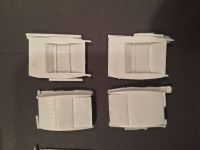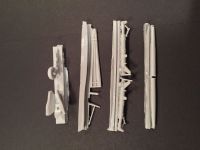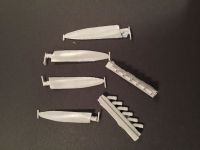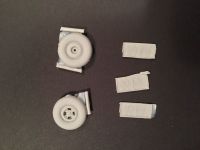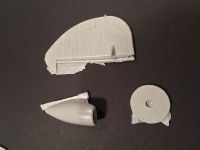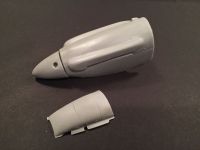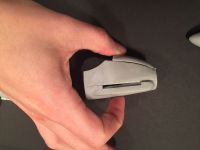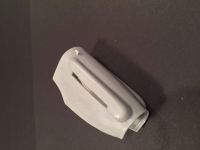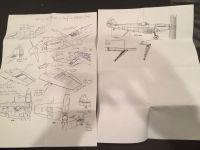Jim Brown | 1/32 Seafire Mk XV Conversion
Reviewed by Mike Swinburne
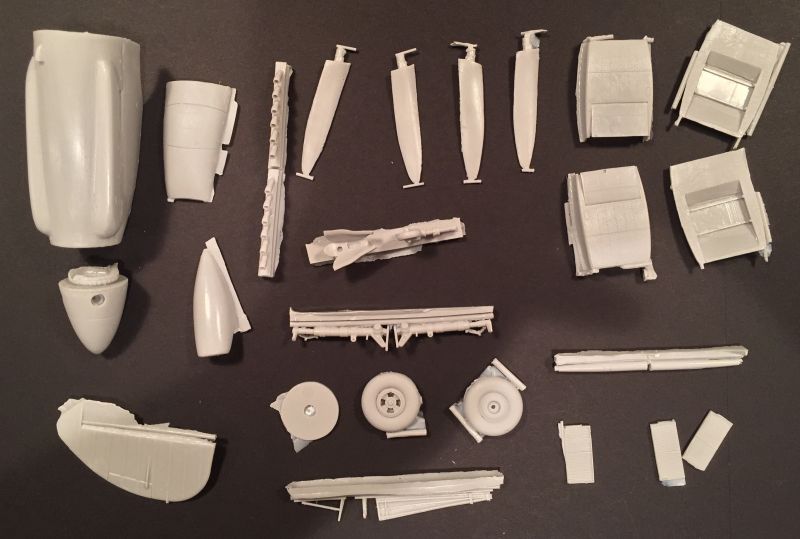
When Jim Brown mentioned he was releasing a Seafire XV conversion in 1/32, I knew this was a set I'd need to add a one-off Seafire to my RNZAF collection. Having been given the opportunity to review Jim's Spitfire Mk XIV conversion last year, I jumped at the opportunity to take a look at this new offering as well. Thirty one grey resin pieces make up the Seafire XV conversion set. Included are a new cowl, spinner, props, radiators, wheels, gear, tail wheel gear doors, rudder, air scoop, cannon, exhaust stubs, and arrester hook assembly. One of the four radiator grilles was missing from my copy of the set.
The conversion set has been designed to be used with the Revell Mk IIa to keep total costs down, but should be fairly easily adaptable to nearly any spitfire kit. My first thought when going over the parts was to compare the new nose to the Spitfire XIV nose. The Seafire nose should be shorter than the Spit XIV due to the difference in turbochargers, and sure enough, the resin piece was shorter. I have not compared dimensions but the nose looks to be the right length. The builder may want to fill the cowl fastener detail and add new detail in its place, as the definitions are somewhat uneven in the resin piece and some are practically invisible. The spinner and prop blades look good, but two of the blades have an air bubble in them and one of the four holes for mounting the blades in the spinner is off center. The off-center mounting hole will be a pretty easy fix as I believe the holes will need to be drilled deeper anyway.
One thing I found a bit surprising was that the new lower cowl does not fit flush onto the main nose piece. It seems to have a more pronounced curve than the bottom of the nose, so some shims will be needed unless the builder opts to sand the lower cowl to fit. The chin scoop looks great and the exhaust stubs are hollowed out and should look great once painted. The radiators look good to me, they may be a copy of parts from the Tamiya Spitfire Mk IX. Cannon barrels are a nice addition to builders using a Mk IIa kit, but a turned brass barrel added on will look nicer once the model is completed if the builder doesn't mind spending a few additional dollars.
The new rudder has nice detail on it, but I'm perplexed by the large control horn (?) on the left side as this is not a feature I'm seeing on photos online. Also curious to me is that the resin landing gear appears to be the same castings as included in Jim Brown's Spitfire Mk XIV conversions, but the gear legs in this conversion do not appear to have the metal reinforcing rods cast in. Either way, detail on the gear is sharp and well cast as are the wheels and hubs. The arrestor hook assembly contains three pieces and is well cast.
Instructions included with this conversion are (for now) a modified version of Jim's Spitfire Mk XII conversion with one page of text and one of line drawings. A page has been added containing line drawings of the extended arrestor hook assembly. It will be up to the builder to cut make any appropriate modifications to the lower fuselage if the arrestor hook will be deployed, as no recess or other provision is included to block what will be a see-through into the fuselage.
As of the time of writing, Jim Brown only sells his resin sets through his eBay store. While some extra work will be needed by the builder to even up the cowl fastener detail and block off the see through effect with a deployed arrestor hook, the builder will already need to have the scriber handy as wingfold lines will need to be added onto the donor kit wings regardless. I'm excited to see that Seafire fans will be treated to a Seafire XVII conversion before long also, as Jim is already working on the stinger tail piece for it. I recommend the conversion to anyone with experience working with basic modifications and resin. As with Jim's other sets, the surface detail isn't perfect, but it's a very good start and fills the void of the early Griffon-engined Seafires that I don't believe could be done without scratchbuilding before this release. My sincere thanks to Jim Brown for the review sample.
© Mike Swinburne 2017
This review was published on Tuesday, July 11 2017; Last modified on Tuesday, July 11 2017

